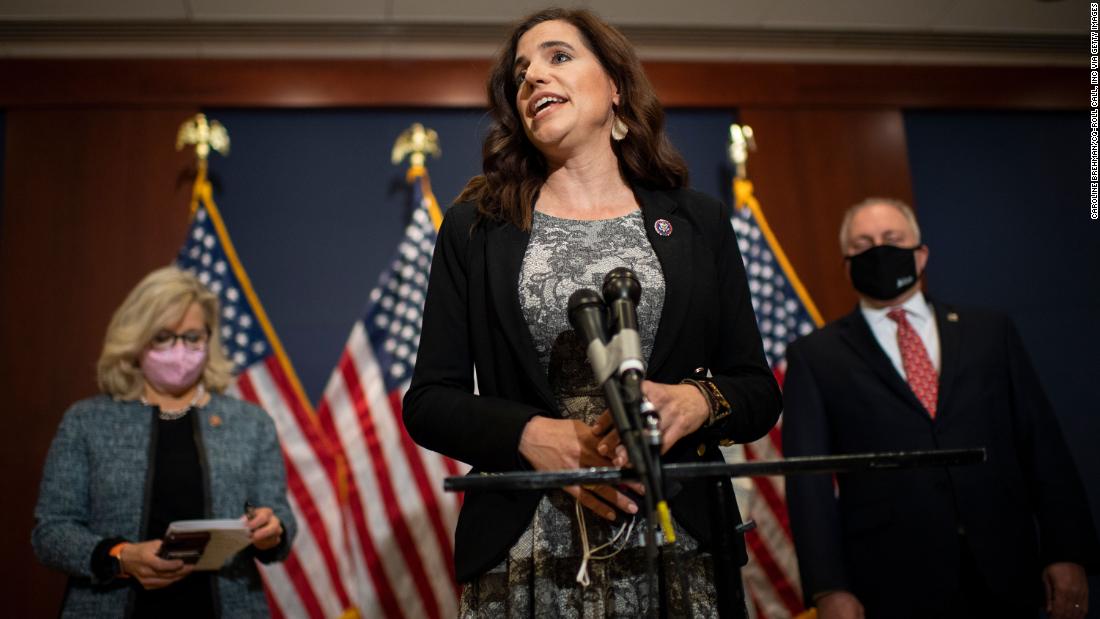
Freshman Rep. Nancy Mace of South Carolina described the statehood proposal as a Democratic power grab. She said at a news conference: "DC wouldn't even qualify as a singular congressional district, and here they are: They want the power and the authority of being an entire state in the United States."
Mace did not explain why she believed DC wouldn't "qualify" as a congressional district. A Mace spokesperson did not respond to CNN's requests for clarification.
But some journalists, average Twitter users and two experts consulted by CNN surmised that Mace was suggesting DC's population is too small for it to qualify as a congressional district. So here is a look at the facts related to that argument.
Facts First: It's not true that Washington, DC, does not have enough people to be a congressional district. The Constitution requires that each state have at least one representative in the House no matter what the state's population is. And DC's estimated 2019 population -- 705,749 -- was larger than the estimated populations of 77 of the 435 existing congressional districts, according to one-year estimates from the Census Bureau's American Community Survey. DC also had a larger estimated population than two states in 2019: Vermont (623,989) and Wyoming (578,759).
DC was more populous than every congressional district in Nebraska, New Hampshire, Maine, Rhode Island and West Virginia.
In the congressional apportionment that followed the 1910 census, the average district had 210,328 people, according to the Census Bureau. We make note of this historical tidbit simply to emphasize the obvious fact that DC's current population is far greater than the population of many of the districts of generations past.
"I think it's kind of an open and shut case" that Mace was incorrect, said University of Georgia political science professor Charles Bullock, an expert on congressional redistricting.
"Mace's claim is a complete non sequitur. A state will always have at least one congressional seat no matter how small it is," said Kenneth Mayer, a University of Wisconsin-Madison political science professor and another redistricting expert.
Both Bullock and Mayer noted that Vermont and Wyoming are less populous than DC -- and that Alaska, with an estimated population of 731,545, was only slightly more populous than DC in 2019. Vermont, Wyoming and Alaska, like Delaware, Montana, North Dakota and South Dakota, have a single House member and the constitutionally mandated two senators.
Mace's own district, South Carolina's 1st District, had an estimated 2019 population of 821,107. But another district in South Carolina, the 6th District, had an estimated 665,215 people, about 40,000 fewer than DC had.
The country's least populous district in 2019, Rhode Island's 2nd District, had an estimated 529,295 people -- more than 176,000 fewer people than DC. There were six districts with at least 100,000 fewer people than DC.
After the census is conducted every 10 years, states are allocated congressional seats based on their populations. States then decide how to draw the boundaries of their congressional districts.
"claim" - Google News
April 22, 2021 at 06:53AM
https://ift.tt/3sGJtm3
Fact-checking Nancy Mace's claim that DC wouldn't 'qualify' as a single congressional district - CNN
"claim" - Google News
https://ift.tt/2FrzzOU
https://ift.tt/2VZxqTS
Bagikan Berita Ini















0 Response to "Fact-checking Nancy Mace's claim that DC wouldn't 'qualify' as a single congressional district - CNN"
Post a Comment